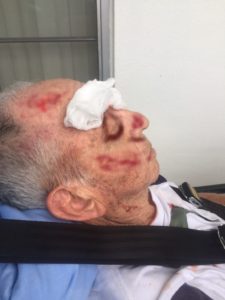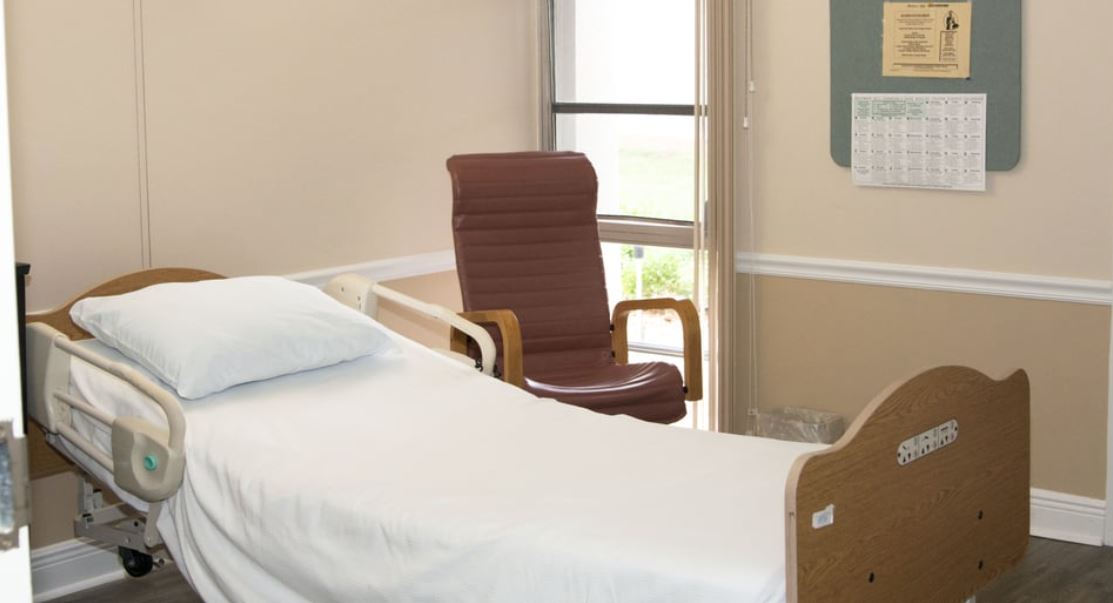How Can a Nursing Home Stop a Patient from Rolling out of Bed?
Nursing homes have a legal duty to implement fall prevention techniques in fall risk residents. So how can a nursing home stop a patient from rolling out of bed? Sadly, nursing home falls from bed are the most common form of falls resulting in injury.
If your loved one suffered a fall from bed inside a nursing home and suffered serious injury, investigate the matter immediately. Rolling out of bed is a known risk in long term care and the law requires the facility use tools and techniques to reduce falls from bed.
Contact Us for a Free Consultation
Falls in a nursing home or assisted living facility can result in serious injuries for your loved one. If your loved one suffered injuries from a preventable fall, our team can help. Contact us today for a free consultation.
Honestly I wasn’t expecting much and I was skeptical going in. The team at Senior Justice proved themselves to be compassionate and respectful as well as holding the facility responsible for their actions. We received a much larger compensation than I had imagined and my brother and I are truly thankful for the folks at Senior Justice.
Michael more than exceeded my expectations and I will always be grateful for what he did to help me during a very trying time in my life.
I highly recommend the Senior Justice Law Firm, if you are searching for a professional team of attorneys who will be looking out for your best interest.
Falling from a Nursing Home Bed is a Common, Yet Often Preventable, Occurrence
Many people associate the risk of falls in a nursing home with residents walking down a long hallway unsupervised. However, the reality is that many falls in a nursing home occur when a resident is moving into or out of a bed. Most of these falls from bed occur at night or in the early morning hours. Oftentimes, these falls occur while the resident is sleeping, and they simply roll out of the nursing home bed and hit the floor beneath them, causing injury.
Falls from a bed can be difficult to prevent, but nursing homes have a variety of tools at their disposal to assist in keeping residents safe.
If someone you love has been injured or even died as a result of falling from their bed in a long-term care facility, the nursing home may be liable for its failure to implement protective strategies.
In order to understand whether you have a case, it is important to understand more about the dangers of falling from a bed in a nursing home. Additionally, be sure to seek legal assistance from a nursing home abuse attorney who can review your case and guide you on potential next steps.
At Senior Justice Law Firm, we exclusively focus on injury and wrongful death cases against nursing homes and assisted living facilities. This is all that we do. About half of our cases involve elderly fall injuries. Let our years of experience in this niche practice area guide your family to justice. Call us today at 888-375-9998 or live chat with our office now to determine if your family member’s fall from bed was preventable.

Federal and state regulations require nursing homes to assess fall risk and implement fall preventative measures. If the facility fails to implement the right preventative measures, you may have a legal claim.
Getting the Runaround from the Facility
The common defense we get from the nursing home after a patient rolls out of bed and breaks a hip is, ‘what did you want us to do? Have an aide there to catch her at two in the morning?’
This may appeal to a layperson, but as attorneys that work with nursing home regulations and statutes daily, we see this excuse as lacking.
All too often, when we investigating a liability case involving an elderly, confused patient that falls from their bed, the nursing home has failed to implement even the most basic of fall preventative techniques. This is a form of nursing home negligence, and if proven, the nursing home is liable for the harm caused by the fall from bed.
Methods of Preventing Falls from Bed in Nursing Homes
Some falls are unpreventable. Other falls are preventable. Beyond the preventability of the fall, some fall injuries are preventable, even if the fall was not.
Simply misplacing a hand while sliding out of bed or catching the tip of a toe on the floor while stepping forward may be accidents, however, they still constitute negligence. An injury while an aide is giving hands on assistance to a resident is called a transfer injury.
The more common fall from bed injury involves an unsupervised roll from bed in the middle of the night. While it would be ridiculous to demand a nursing home provide a sitter to ‘catch’ the resident if they fall, there are simple, cheap, and accessible fall mitigation tools that nursing homes easily can use to stop a resident from rolling out of bed.
A wide variety of simple features installed in nursing homes and around the bed area can play a significant role in reducing the overall incidence of falls from bed. However, studies have shown that single avenues of fall reduction alone are typically not sufficient to reduce the rate of bed falls.
Instead, a nursing home must take a comprehensive approach to fall prevention by implementing a number of safety tools at once, in addition to staff training that addresses issues such as alarm fatigue (in which a staff member becomes desensitized to resident alarm devices going off because they hear them so frequently).
Experience Matters
Some of the potential fall-from-bed prevention measures in nursing homes include:
Bed Rails
Bed rails are some of the most common options when it comes to nursing homes’ choice for preventing bed falls. These rails, which are installed on the sides of a bed frame beside the mattress, are intended to stop residents from rolling out of bed and give them a handhold when they are moving.
When properly installed on compatible frames with the correct mattress, bed rails are useful for some residents. However, most often, bed rails are installed on beds that were not intended for them or with mattresses that do not correctly fit the bed frame, which can result in residents rolling in between the mattress and rail and sustaining injury. Rails that are correctly installed are just one solution to falls from bed, but they alone do not provide sufficient prevention.
Even if a facility is a ‘restraint free nursing home’, bed rails can still usually be ordered with a doctor’s order.
Floor Pads
Some methods of dealing with falls from a bed in nursing homes aim to prevent the fall itself, while others seek to reduce the potentially injury from a fall. Floor pads are one such alternative.
These soft mats are placed on the floor surrounding the bed so that, should the resident fall, their blow is cushioned and they sustain less damage. This can greatly reduce incidents of broken hips and brain bleeds. Floor pads are often used in conjunction with another measure like bed rails to both reduce some residents’ likelihood of a fall but also provide greater safety if a fall does occur.
However, floor pads can also pose a problem for residents who have difficulty walking, as their feet can snag on the pads if they are not smoothly installed.
Bed Alarms
Bed alarms are an electronic device used in some nursing homes to alert staff of a potential fall risk before it happens. A strip is placed underneath the mattress of a bed, and this strip is calibrated to sense a certain range of pressures that correspond to the weight of the mattress plus the specific resident who uses the bed.
If the resident attempts to get out of bed, the pressure on the strip reduces, and it will sound an alarm that alerts staff that a resident is moving and could be at risk of a fall. Numerous studies have been done on the efficacy of bed alarms (and fall prevention measures in general), noting, “Bed alarms alone are relatively useless as an intervention.
For alarms to be effective, they must be part of a much more comprehensive care plan put into place for residents who are at risk for falling. In fact, there is no single thing that can be done which reduces fall rates. Fall rates which are reduced in any facility are reduced by a multi-pronged approach to resident safety and by a clear focus by staff on keeping residents safe.” However, “when used as one piece of a comprehensive care plan, [bed alarms] can be quite effective devices in ensuring resident safety.”
Toileting Schedules
Residents get out of bed in the middle of the night for one major reason; to use the restroom. One useful way to reduce the overall incidence of falls in a nursing home is to understand when residents are getting out of bed so that staff can be present to ensure their safety.
This can be achieved through the establishment of a toileting schedule, in which a resident’s unique needs are understood and a personalized schedule is developed for them that will ensure they are assisted to the bathroom at a frequency that works for them. This prevents residents from getting up to use the toilet on their own and instead provides staff at scheduled times to assist them, reducing the number of times that a resident leaves bed unsupervised.
Low Beds
One of the primary reasons that residents sustain injuries when they fall from bed is that they fall some distance before hitting the ground. By lowering the overall bed height, residents can plant their feet more sturdily on the floor before they stand, and a fall will occur over a shorter distance with less impact. This can reduce injuries and lessen the number of falls simultaneously, proving to be a simple and inexpensive fix for nursing homes.
Frequent Checks
Of course, staff are perhaps the number one most effective tool in preventing residents from falling from their beds, which means that staff who are engaged and regularly checking on individuals will prevent more falls than those who leave residents to their own devices.
By scheduling frequent checks for each resident, the individual has an opportunity to speak up about any needs that may require them to get out of bed separate of their normal schedule, and the issue can be addressed at that time rather than the resident feeling as though their needs are not being met if they do not get out of bed themselves.
“Granny” Cams
Some nursing home residents pose a greater fall risk than others, and some facilities are particularly large or short-staffed. This is where “granny” cams or surveillance cameras can become useful.
These cameras provide an up-to-date video feed of each resident, so staff are given the opportunity to notice someone getting out of bed unsupervised even if they are not there in person in the resident’s room. This can provide enough time to approach the resident and keep them safe, as well as meet whatever need has caused them to want to stand up on their own.
Statistics on Falls from Bed in Nursing Homes
When it comes to nursing home injuries, falls are some of the most common. With over five million beds in nursing homes all across the country, it comes as no surprise that injuries related to falling from a bed continue to rise. More than 4,000 residents are admitted to emergency care each year for cases of injury solely from beds that have rails, which are intended to assist residents in staying away from the edges and sliding out of the bed.
Because cases of injury by falling from a bed within a nursing home tend to go underreported or reported only as a fall injury, it is difficult to correctly estimate how much worse this issue is than the numbers show at a surface level.
Statistics also indicate that many residents who fall in a nursing home actually do so more than once, with the average sitting at approximately 2.6 falls per year. One of the most powerful tools at the disposal of nursing homes is a comprehensive fall prevention plan, which comprises multiple possible steps such as bedrails, hip protectors, alarms, and other options.
Most Common Injuries as a Result of Falls from a Nursing Home Bed

Falls can be dangerous for a variety of reasons. Perhaps the most commonly associated risk of a fall is injury to the head, especially if a resident falls out of a bed from a horizontal or leaning position. Striking the head during the fall could result in fracturing of the skull as well as subdural hematoma, or bleeding on the brain.
As blood continues to build in the cranial space, the pressure in the cavity increases, placing addition stress on the brain besides the actual bleeding injury. If left untreated—such as if a resident falls when nursing staff are not in the room—the gradually increasing pressure can eventually result in the herniation of other cerebral structures in the brain and lead to death.
However, brain injuries are only one of many possibilities during a fall. If the resident’s eyes or other body parts are struck on the way down, additional injuries could occur. Broken bones are another common result of falls, especially from bed, when the resident may be in the middle of a bent or leaning position when the fall occurs that could place uneven pressure on a bone exposed to sudden force.
Broken bones are not only painful, but they also risk significant bruising and inflammation in an area. In fact, those who have suffered severe broken bones or pelvic fractures as a result of falling from bed are associated with a clinically significant increase in the chance of death in the one to two years following the fracture.
Falls in nursing homes are not simply the potential source of unexplained bruises. They can arise from inadequate fall prevention measures—which are critical to the longevity and wellbeing of the residents who live there.
What to Do If Your Loved One Was Injured While Falling from a Bed in a Nursing Home
Learning that someone you love has been injured as a result of falling from a bed in a nursing home can be difficult news to receive. After all, you may expect that it is the nursing home’s job to ensure that this sort of accident does not happen. However, many nursing homes elect to engage in cost-saving measures and may not purchase or install some of the most valuable tools for preventing falls, such as bed rails, alarms, or low-rise beds. This means that the nursing home could be at fault for your loved one’s injury or even death.
Free Nursing Home Fall From Bed Case Consultation
The attorneys at Senior Justice Law Firm would be happy to help you explore liability issues if your loved one has been injured in a bed-related fall in a nursing home. Reach out or use our online contact form to schedule a consultation free of charge to discuss your options. We work exclusively on contingency fee, so you pay us nothing
Call us today at 888-375-9998 or live chat with our office now to learn more about your legal rights after a loved one has suffered a fall from a nursing home bed.












